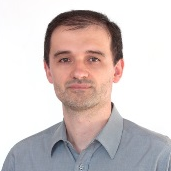Optimisation and Scale-Up of Supercritical Fluid Extraction Processes
A special issue of Materials (ISSN 1996-1944). This special issue belongs to the section "Manufacturing Processes and Systems".
Deadline for manuscript submissions: closed (31 March 2016) | Viewed by 29196
Special Issue Editor
Interests: transport properties (mainly diffusion coefficients in liquids and supercritical fluids; phenomenological modeling; molecular dynamics simulations); separation processes (adsorption/simulated moving bed; ion exchange; membranes; supercritical fluid extraction); synthesis and characterization of microporous materials for catalysis and separation processes
Special Issues, Collections and Topics in MDPI journals
Special Issue Information
Dear Colleagues,
The ultimate ambition of the fundamental and applied research on supercritical fluid extraction (SFE) and fractionation is the development of a next generation of benign products and sustainable chemical processes.
Notwithstanding the fact that it is frequently and erroneously associated to prohibitive investments, the SFE is being progressively accepted as a green, selective, and cost-effective industrial alternative for the production of valuable extracts and oils from vegetable and animal biomasses. There are already more than 150 SFE commercial units worldwide, many of them devoted to natural products. This number will certainly increase in the near future, where one may expect that multipurpose plants and hybrid and combined processes will prevail.
In this context, accurate optimization and scale-up studies are decisive to unequivocally validate and promote the implementation of efficient SFE-based units and new business opportunities. Here, the use of computational tools for process modeling and simulation, combined with sound design and economic principles, is inherently well positioned for a desired industrial ratification.
The intercrossed complexity of aspects underlying a SFE process (e.g., mass transfer mechanisms, physicochemical interactions between the target molecules and the micro-structure of biomass, operating conditions, patterns of flow, and equipment geometry) requires a comprehensive knowledge of theory and technical principles, which undoubtedly join academics and specialized companies.
It is my pleasure to invite you to participate in this Special Issue of journal Materials, titled “Optimisation and Scale-up of Supercritical Fluid Extraction Processes”, by submitting back your communication, review or full paper at your earliest convenience. Materials currently has an Impact Factor of 2.651 and 5-Year Impact Factor of 3.350.
Dr. Carlos M. Silva
Guest Editor
Manuscript Submission Information
Manuscripts should be submitted online at www.mdpi.com by registering and logging in to this website. Once you are registered, click here to go to the submission form. Manuscripts can be submitted until the deadline. All submissions that pass pre-check are peer-reviewed. Accepted papers will be published continuously in the journal (as soon as accepted) and will be listed together on the special issue website. Research articles, review articles as well as short communications are invited. For planned papers, a title and short abstract (about 100 words) can be sent to the Editorial Office for announcement on this website.
Submitted manuscripts should not have been published previously, nor be under consideration for publication elsewhere (except conference proceedings papers). All manuscripts are thoroughly refereed through a single-blind peer-review process. A guide for authors and other relevant information for submission of manuscripts is available on the Instructions for Authors page. Materials is an international peer-reviewed open access semimonthly journal published by MDPI.
Please visit the Instructions for Authors page before submitting a manuscript. The Article Processing Charge (APC) for publication in this open access journal is 2600 CHF (Swiss Francs). Submitted papers should be well formatted and use good English. Authors may use MDPI's English editing service prior to publication or during author revisions.
Keywords
- biomass
- carbon dioxide
- economic analysis
- extracts
- green chemistry
- industry
- modeling
- optimisation
- scale-up
- simulation
- supercritical fluid extraction
- supercritical fluid fractionation
- sustainability






